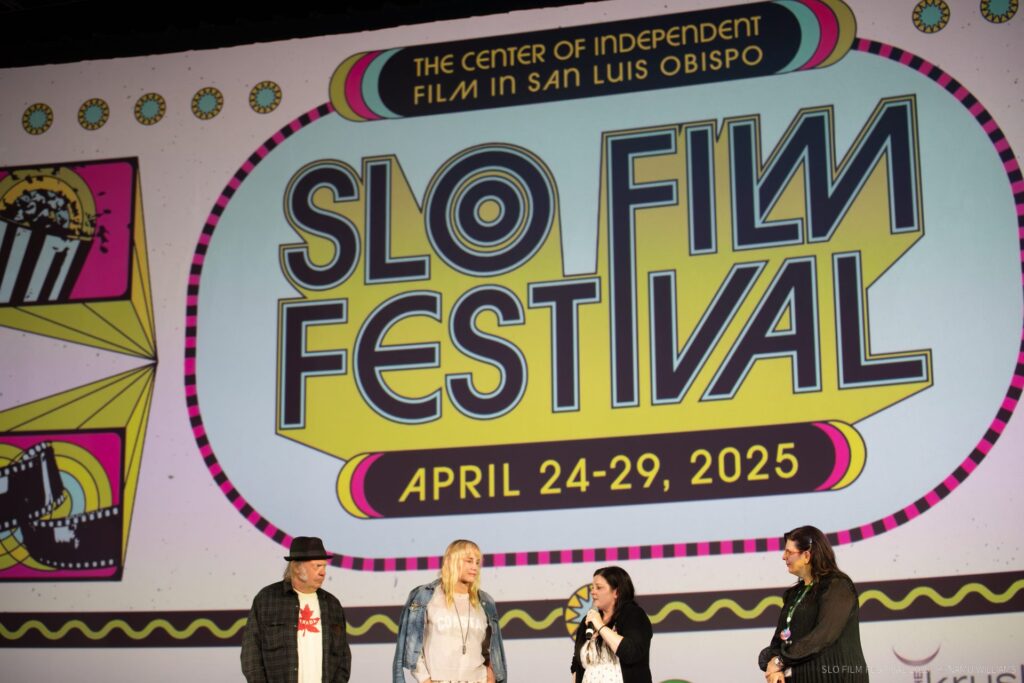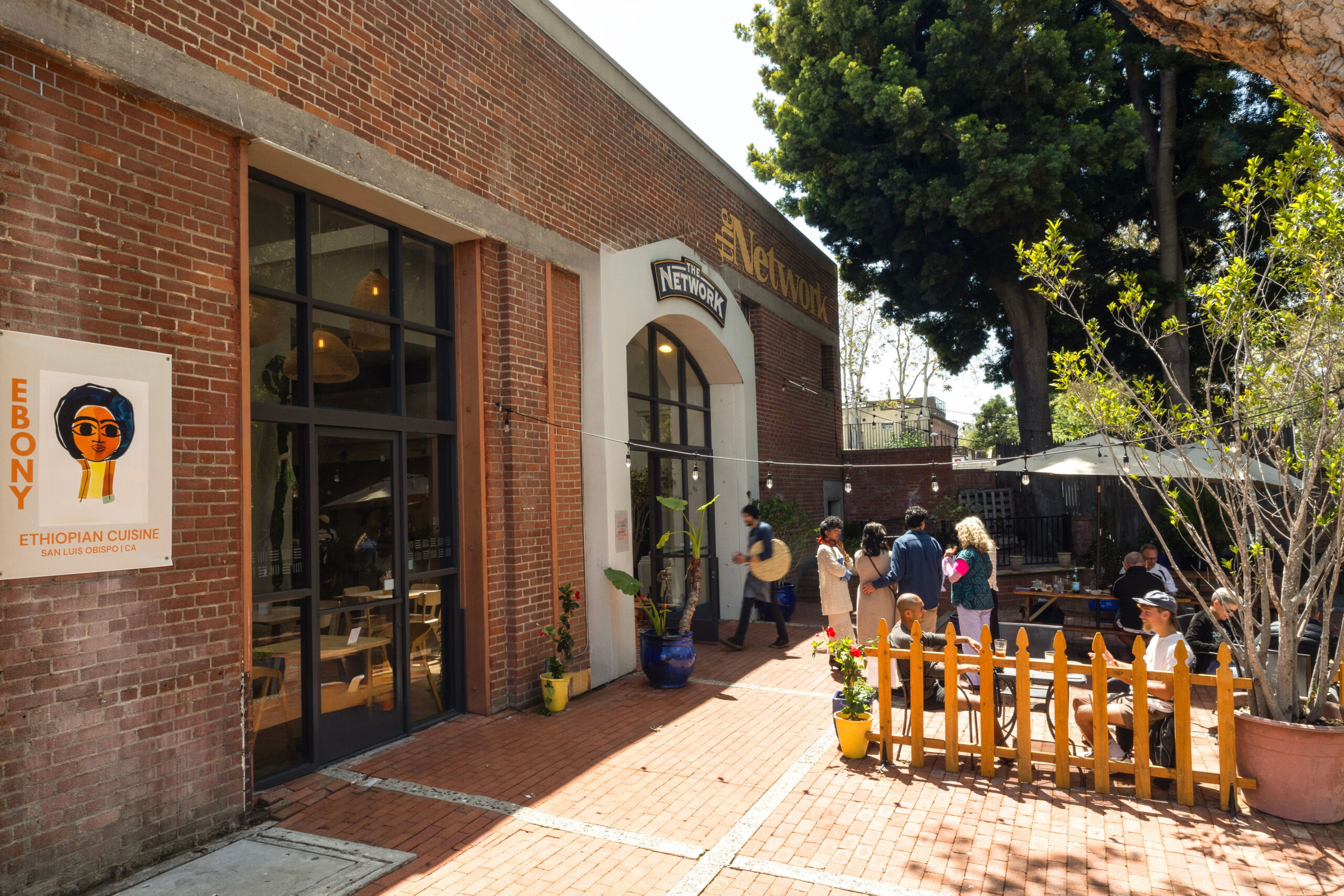There’s more to California than Los Angeles and the Bay Area. In fact, hidden halfway between Los Angeles and San Francisco on historic Highway 1 is the city and county seat of San Luis Obispo. The city is the cultural, commercial and entertainment hub of California’s scenic Central Coast, offering year-round sun, a warm Mediterranean marine climate, a world-class wine region, thousands of acres of protected open space, and a charming downtown. The two-college town boasts roughly 46,000 residents and keeps a low profile, making it one of California’s best-kept secrets.
Nestled between its farm-to-table-style cuisine, scenic mountain vistas, and wineries surrounding the area is an unexpected burst of culture. Although the demographic is small, several Black-owned businesses are thriving in the small town.
One local thrift shop keeps the city alive
Adam Kemp, a former wrestler at California Polytechnic State University, dropped out of his master’s program to start a vintage thrift shop. Thrifty Beaches is 27,000 square feet of once-in-a-lifetime finds of fashion, furniture, jewelry, records, and anything else you can think of. The 25-year-old opened the store in September after discovering thrifting as a hobby.
“I happened to stumble into Goodwill. I never really been into any Goodwill outlet before. Goodwill outlets are the last chance an item has before it gets trash impacted. I went in there, and I was just blown away by how much waste there is in the world, and I wanted to give items a better chance at selling, so I just started going there a lot, buying stuff and flipping it at like swap meets and markets and dedicated all my time to finding cool things,” he told Blavity.
The building had been vacant for five years before he signed a lease. The owner didn’t believe in his vision and bet on it failing within a month, but Kemp bet on himself. With the help of a New York loan shark, Kemp was able to secure the down payment. He paid off the debt in six months, and the building’s owner returned with a long-term lease for Kemp to sign.
With as many fabulous finds as Thrift Beaches offers and Kemp admitting to never previously having an eye for fashion, it’s ironic that this is his full-time hustle. He mentioned being bullied in high school. But now, he’s the ultimate cool kid, and SLO locals can’t get enough of the store.
His plans for expansion are focused on in-store opportunities.
“I’m actually planning on parking some cars in here, some really unique cars. We did big events. That’s probably why I wanted a space this big, because there’s no vintage store or secondhand store in all of California that’s this big,” he gushed.
He’s in no rush for e-commerce.
“I think that in-person sales are a unique opportunity. A lot of big-box retailers are going out of business, but I think it’s because they’re using an old method of retail. Retail’s dying, but it’s dying because people aren’t adjusting,” he explained.
Kemp is not blind to the fact that he and his store stand out. Being a Black-owned business has its perks, but there’s also a level of competition, he says, that people weren’t expecting, even from close friends and family members.
“My family, they don’t get it because they’re like, ‘How are you up there making all these waves? You got all these white people shopping and supporting you.’ Because, obviously, SLO is majority of white; 70% of our shoppers are probably white just because that’s the population here,” he asserted. “It’s interesting because I’ve had other business owners tell me, ‘People love shopping at Adam’s store because it’s DEI; they’re doing it because they feel bad.'”
When asked why SLO is the perfect place for him and Thrifty Beaches, Kemp said SLO offers a good balance between work and life. More than anything, he’s helping to bring it up to date.
“When I first saw SLO, it just seemed like it was stuck in like 2008 or 2011. And I wanted to do something to bring it forth a little bit. So, it just seems like fertile ground here because it’s such a cool place, but it doesn’t have the coolness to go with the destination,” he said. “What I saw for SLO and what I still see for SLO — any other city like San Diego, LA, San Francisco, Long Beach, Irvine — those are already kind of getting those new businesses and those new experiences. I think SLO’s not there yet, but I think if you bring something new, then it will be there.”
A local farmers market and an Ethiopian restaurant are two hot SLO spots
SLO’s offerings are charming, like something out of a Hallmark film. Its weekly farmers market has been voted one of the Los Angeles Times’ Top 10 California experiences. Every Thursday evening for the past 40 years, SLO has transformed Higuera Street into what is now the second-largest farmers market in the western United States, featuring six blocks of farm-fresh produce, flowers, down-home barbecues, handmade creations, and engaging entertainers.
Just blocks from the farmers market and Thrifty Beaches sits Ebony Ethiopian Cuisine. An initial pop-up space where the owners used a kitchen at the local airport, they moved into their current space in SLO due to increasing demand. Ebony offers deliciously seasoned vegan and gluten-free meals, catering to the every desire of health enthusiasts. Their model is different, as they’re open only four days a week. It goes with the idea of the balancing act.
“I’m a believer that however you cook your food is what people are going to eat, so you have to get rest. Also, my aunts cook with us, and they make good food, and I want them to be well-rested and happy, not work all the time. So we work four days, but we still have to prep and do other things, so we’re not open,” Ebony’s Feben Teffera told Blavity.
The Ethiopian-born New York transplant moved to SLO with her husband and son when her husband was teaching at the local university. Fed up with relocating, she told her husband it would be their final stop. After being a full-time mom, she turned her passion for cooking into a business.
Because it’s a healthier option, it opens up SLO residents to something new, keeping the business booming.
“I feel like we get healthy eaters; we get vegan people, and we get people who want to experience the cuisine and people who actually love vegan food. So we kind of catch a big variety of people,” Teffera explained. “If it wasn’t healthy, I feel like we would lose a lot of our clients because we get a lot of people here because it’s healthy and vegan and gluten-free.”
Like Kemp, Teffera said the reception in SLO to the restaurant has been overwhelmingly positive. While she admitted that she stands out because of the demographic, it’s a unique town, which makes it manageable.
“It’s so friendly, so wonderful. Everybody was really, really excited to have us. And everybody always says, ‘Oh, I wish there was more diversity or more food as far as other restaurants would have been.’ But yeah, zero complaints,” she said.
As for what’s next for Ebony, the ample space that houses the restaurant allows Teffera to utilize it as a dual area to host community events, provide cultural education, and incorporate a charitable aspect. Locals can nominate a single mother to receive a free meal.
What else is there to do in SLO?
The city’s annual SLO International Film Festival celebrated its 31st anniversary this year, featuring filmmakers and major contributors from around the world. It’s a highly anticipated yearly downtown event. In addition to music, food, and entertainment, there is a thriving hiking community.

Most residents hike two to three times a week. Also known as Madonna Mountain, Cerro San Luis can be a strenuous uphill climb with stunning views of San Luis Obispo or a gentle one-hour trek.
SLO also has a booming local wine country. Chamisal Vineyards is the only spot in town where wine lovers can taste their sustainably produced Chardonnay and Pinot Noir straight from the source.

